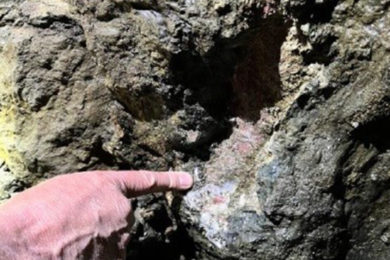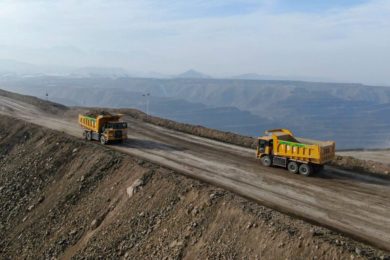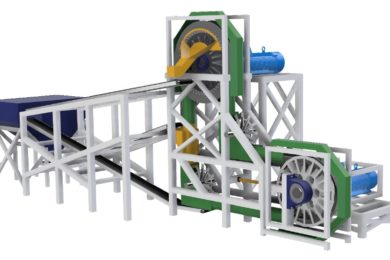Australia has “lost the plot” in its backing for greenfields minerals exploration and is continuing to slip in world rankings on support for discovering new mineable deposits. At risk the sector has been warned, is the survival of at least 25% of Australia’s junior explorers. Addressing the second day in Perth today of the Paydirt 2010 Australian Gold Conference, Integra Mining’s Managing Director, Chris Cairns, in a general commentary on the gold industry, said Australia had slipped from being a world leader in share of world exploration spend in 1993, losing its crown to Canada in 2002.
“The one single differentiating factor was Canada’s introduction in October 2002 of a 15% exploration tax credit for flow-through shareholders,” Cairns said. “Australia’s failure to do likewise since has only resulted in Canada continuing to be the world leader in exploration spend – and therefore discovery – while Australia has continued to decline – to a point it and third placed US are both a long way off the Canadian pace.”
“The impact is no better illustrated than at grassroots level where the short-term funding for explorers in Australia’s junior sector – who now account for more than 60% of national exploration expenditure – has left them cash strapped. Most have barely more than one year of cash reserves in hand at any one time. At the cash burn needed for successful exploration, these juniors need to be able to work on at least a five year timeframe to allow meaningful exploration and meaningful discovery. They remain very underfunded in the type of exploration they need to do and alarmingly, 25% of Australia’s junior sector will be out of business if they do not raise more money in the next six months.”
Cairns warned against the falsehoods employed by Federal Treasury and inquiries such as the Henry Tax Review in defining the “strength” of Australia’s gold inventory and the related argument that it warranted the impost of higher taxes.
“The current level of Australian gold production is underpinned by a handful of gold deposits discovered decades ago and diminishing exploration success, related to lower exploration expenditure for gold. In addition, significant project permitting and land access restrictions mean that the future production profile for gold and other metals looks bleak – quite the opposite to what Treasury has been advised.
“The reality is that many deposits reported to Treasury as being part of Australia’s Economic Demonstrated Resources (AEDRs), through their location and the capital hurdles required to develop these deposits, many will never be economic. In the meantime, we are putting at risk the new breed of junior Australian explorers and gold developers who are the real victims of potential changes to the Royalty regime and the mooted Resources Rent Tax. A resources rent tax will further diminish Australia’s attractiveness for exploration and mining investment. To maintain Australia’s export income performance, the mining industry needs to invest in exploration, particularly in areas under cover.
“Rather than an ideologically driven profit gouging of the mining industry, the Australian Government must foster an environment of technical initiatives and exploration incentives. These need to include tax incentives rather than penalties if it wants to continue to enjoy the significant benefits of resource sector export earnings, tax and royalty revenues, flow-on economic contributions and regional development the mining industry provides.”
Owners of Australia’s gold assets have been urged to take far greater precautions to protect the confidentiality of their information as the sector squares up to increasing merger and acquisition activity, fuelled by ongoing strong prices and the flight to warehoused gold inventories by central banks. The need for greater protection is also being exacerbated Minter Ellison Senior Associate, Ms Stephanie Rowland says, by the increasing number of transactions involving predatory or complex deals with the plethora of overseas investors circling Australia’s resources assets and owners.
Addressing the conference, Rowland, a WA-based Merger and Acquisition (M&A) specialist in resources, said failure by companies to adequately protect the confidentiality of their data could lead to loss or decrease in value of a joint venture, an asset or even the entity.
“M&A activity in the mining sector is expected to increase substantially over the next 18 months led by cashed up, debt free overseas investors who can afford not to have to wait for troughs in metal price cycles to buy in – and gold is a key target because of its long-term performance credentials,” she said. “With Australia moving to a position as the second largest gold producer in the world, this has created an unprecedented environment where domestic gold companies will be having the ‘predatorial rule’ run over their assets with increasing frequency.
“Before this M&A tsunami hits, project owners should be reassessing whether they have the protocols in place to protect the commerciality and ownership of the information that needs to be shared but kept confidential. This is particularly so if a gold owner is subject to the strong likelihood of multiple suitors – an environment where the audit trail of who knows what, becomes very blurred.”
Ms Rowland urged Australia’s gold sector to lock in confidentiality agreements with potential investors before negotiations reached a stage where confidential information about the target company was communicated to the buyer or investor.
“Gold owners need to ensure that the information they are about to share, is presented so as to minimise the risk that it will be used by others for their commercial advantage. A confidentiality agreement also has to be termed in a manner which does not smother a potential deal, provides clarity about exactly what information is confidential, and a very transparent path of enforcing one’s rights if there is a breach. The reality is that a suitor will aim for a confidentiality agreement that will restrict them in the least possible way.
“If mismanaged, this will heighten the risk for the Australian gold owner to suffer loss from inadequate legal protection of whom, how and why they share information about their business.”
Rowland said that while Australia would be a playground for M&A activity by global equities markets in the near-term, there should be no presumption that legal redress would be successful, easy or even possible if that stoush had to be fought through international jurisdictions that are not as clearly regulated as Australia’s legal system.
“The choice of legal forum or even the choice of law that an Australian gold owner may be forced to fall back to, to contest overseas any derailed confidentiality agreement, can mitigate against protecting or even continuing to own a gold asset,” Rowland said. “There is only one path to follow – insist upon a confidentiality agreement before communicating any sensitive information – and act pre-emptively – not once the horse has bolted.”
The commissioning program for Western Australia’s revamped 850,000 ounce Bronzewing gold mine will commence next week as an open-pit operation with new mine owner, Navigator Resources, anticipating first gold pour in April, the conference was told.
Navigator’s Managing Director, Mr David Hatch, said ramp-up would continue during the June quarter so that Bronzewing entered July at an annualised production rate of 100,000 oz/y “and we won’t be slowing down”. The mine – developed on the 1992 gold discovery 80 km northeast of Leinster – has been successively owned by Great Central Mines, Normandy Mining, Newmont and then to a lesser degree, View Resources.
It was acquired by Navigator in September last year with a historic production record in excess of 3 Moz of gold. “It was a high grade underground mine with intercepts up to 300 m in width and including 83 m at 6.2 g/t Au and 4 m at 32.8 g/t at 240 m depth on a typical level,” Hatch said. “Initial modest surface exploration results need to be tested at depth, with the potential prize being another high grade Bronzewing orebody. We will succeed with Bronzewing.
“The reasons for our success will be based around development of our surrounding 1,000 km2 of highly prospective tenements, modern mine infrastructure recently valued at a replacement cost of over A$200 million and keeping the operation simple. This means starting with an open pit operation for five years with no current plan for underground mining of Bronzewing’s resources.
“Navigator will mine Bronzewing from five separate pits, we are very focused on cash flow management, and – we have the benefit compared to the previous owners of an additional $300/oz gold price.” Hatch said Bronzewing’s central pit had already been pre-stripped by previous owners and “we are only needing to clean up the pit floor with the objective of commencing ore mining within a week or two”.
He said the mine’s mill had a rated capacity of 2.3 Mt/y but Navigator had modelled its throughput at a more conservative 2.0 Mt/y with historical performance showing higher metal recovery rates than the modeled 91%. “We have taken a deliberate philosophical approach to Bronzewing promotion, being mindful of its history, and are tending to underpromise to market what we hope to achieve. Our start-up is low risk but once in full production, we will be going flat out and backed by our exploration, are confident of extending the mine life by at least 10 years.”








